jamesp
Cave Dweller 
Member since October 2012
Posts: 36,607
|
Post by jamesp on Mar 13, 2022 8:23:46 GMT -5
This coral head displays the unpredictability of the silicification process. This was likely a 2 foot diameter coral head but only portions of the central vertical section of the head silicified. The remainder simply did not get preserved by silica. Life as a coral must be difficult. Notice how new corals grew on top of the older corals from left to right in lower 2 photos. This type of coral creates a large 'head'. But these large heads are condominiums of small heads side-by-side and on top of each other. They can live side by side and receive sunlight but when a new head grows atop an old head the old head is going to die if not already dead. In most cases this assembly would have broken into 3 to 4 loose sections at the un-silicified boundaries. Silicification had to at least occur when the lower units were dead and attached. So timing might be a study. 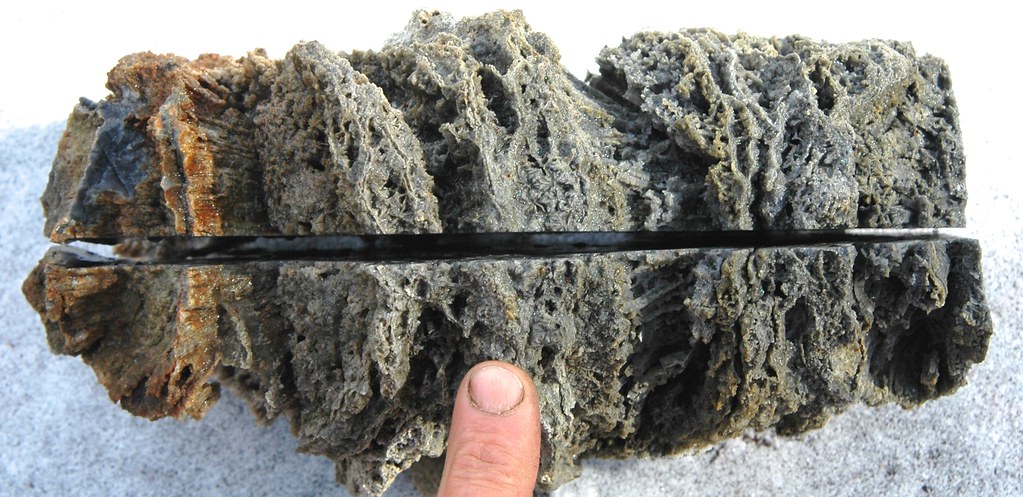   |
|
|
|
Post by fernwood on Mar 13, 2022 9:36:42 GMT -5
I have some that look a lot like that.
|
|
|
|
Post by victor1941 on Mar 13, 2022 10:16:00 GMT -5
|
|
jamesp
Cave Dweller 
Member since October 2012
Posts: 36,607
|
Post by jamesp on Mar 14, 2022 3:41:47 GMT -5
I can answer this question fernwood . Boring clams drill perfectly round holes. Exceptionally round. The terminations of the holes are tapered down cones that come to a sharp point in shape. 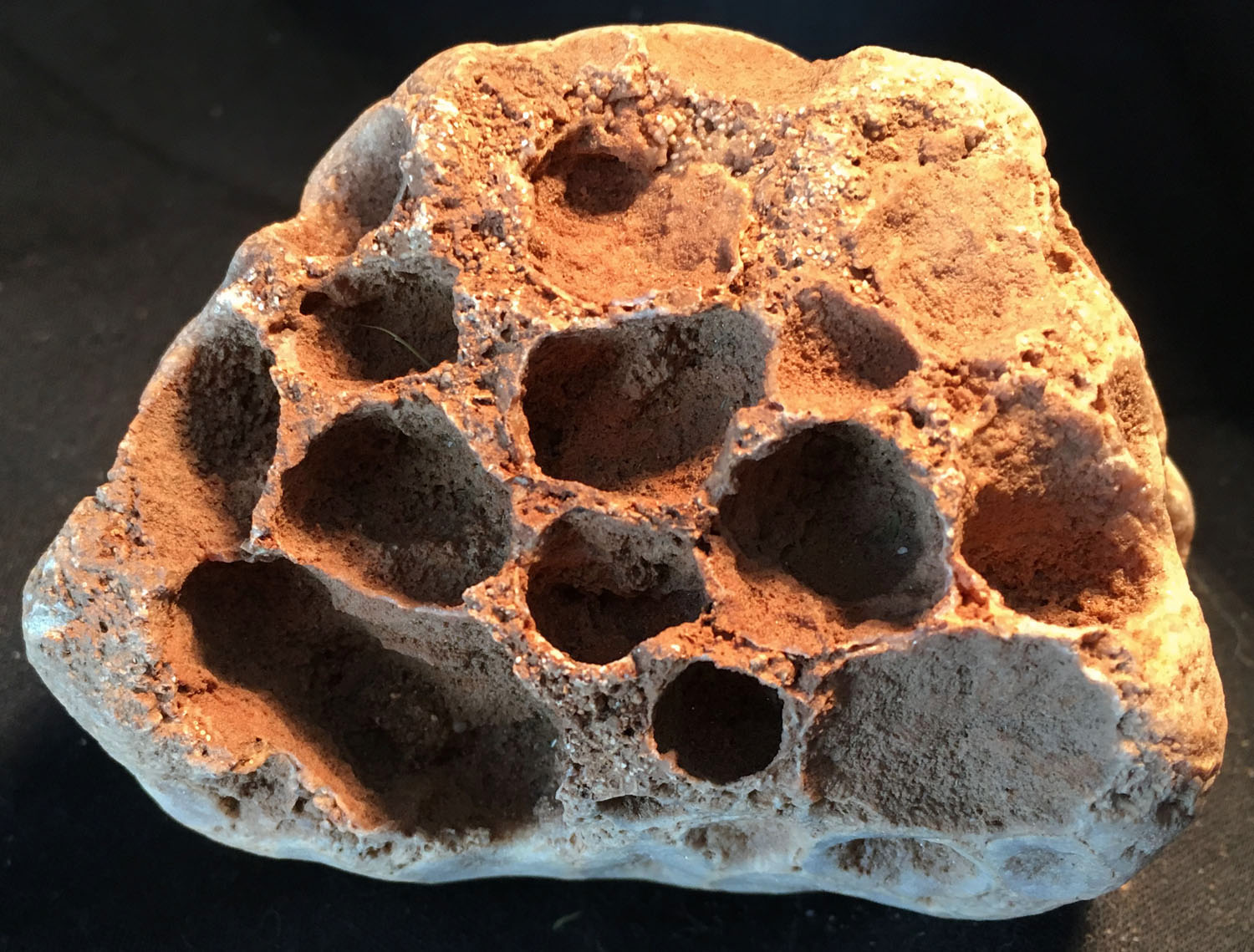 So, what do you think these are? Some are round, some not. Some are cone shaped, some not. Thanks. I wish I could help Beth. |
|
jamesp
Cave Dweller 
Member since October 2012
Posts: 36,607
|
Post by jamesp on Mar 14, 2022 4:12:40 GMT -5
Nice Tampa Bay specimen Victor. I never seen or found a coral with the clam preserved in it. That is a unique specimen. I rarely find clam borings in any corals except those in south Georgia. The Florida corals don't seem to have them. However I have not collected at Tampa Bay since it is picked over so much. But there are almost no limestone/calcium carbonate fossils in the Withlacoochee River in south Georgia. It must be about chemistry. Lots of boreholes though. Then again the south Georgia silicified corals are large and can be silicified 100% even if they are up to 3 feet in diameter. Not like that in many other places. I found large corals in Florida but the centers are not silicified. Conditions for silicification must be very favorable in the Withlacoochee. No doubt that is a boring clam hole. It is dead round. The coral in Tampa Bay-Santa Fe-Zephyrhills-Aucilla-Withlacoochee-Suwannee-Black Bay-Swift Creek-Plant City and several other locations is all quite different in how it silicified. From Tampa Bay north to Valdosta is almost 200 miles and there is a lot of geologic variation in that area. Some locations have unusual color. Some small or large. Some pseudomorph like Tampa Bay and the Withlacoochee. Since coral is elevation dependant it can be found in many places in it's range. I'm not sure other collectors know that. But you can drive down I-75 and stop at most creek crossings at 75 to 90 feet above sea level and find silicified coral. Or drive down primitive clay roads at that elevation and find coral heads. Sometimes I see large piles of them on a farmer's property where he cleared his field of them. |
|
jamesp
Cave Dweller 
Member since October 2012
Posts: 36,607
|
Post by jamesp on Mar 14, 2022 4:19:32 GMT -5
reefbuilders.com/2019/02/05/boring-bivalves-are-eating-corals-from-the-inside/"During our stay with the UCA team, and the few diving we made with them, we noticed that many corals, and especially Lobophyllia were showing weird holes on their polyps. After investigation, we found out that they were infested with boring clams in their skeleton. Some even getting through the polyp tissue, and the coral being force to build a wall around them, leading to some deformities in the skeleton, and the tissues." 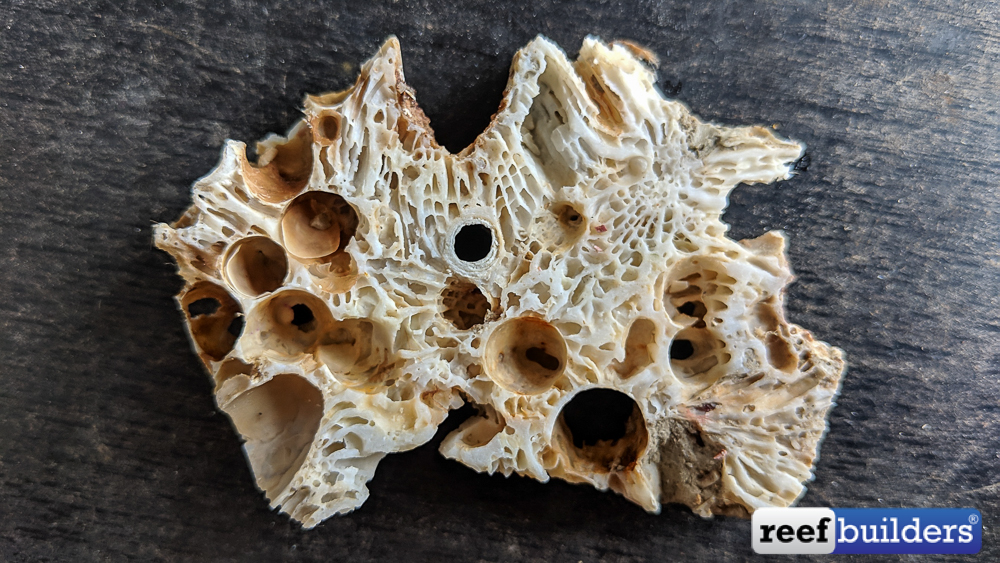 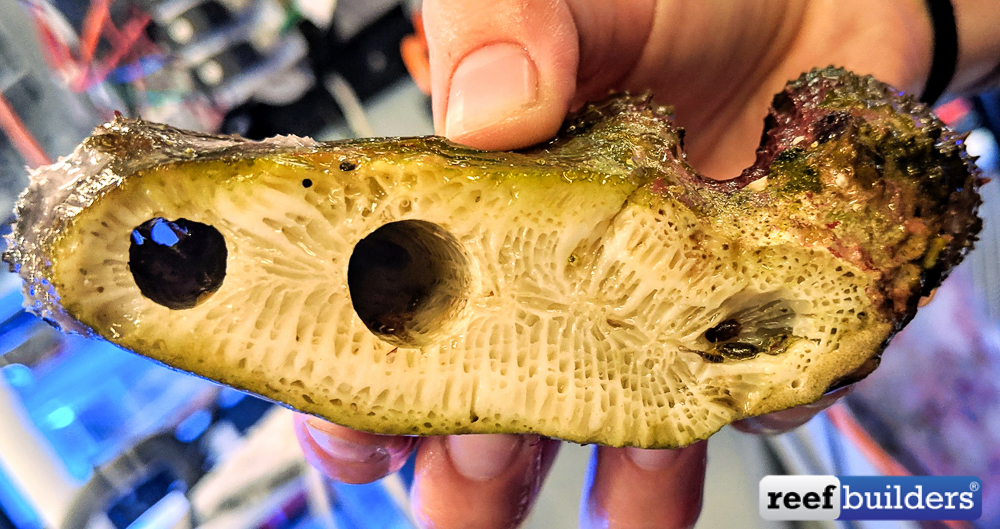 "The boring mollusks are one of the main agents of bioerosion. Like members of the Tridacna family such as Tridacna crocea, they bore mechanically, chemically, or both of them together. It’s well known that corals are the building blocks of the reef, and that as they grow and calcify, reefs grow larger, stronger, and more complex. But less recognition has been given to bio-eroders, the organisms that break down the reef. This balance of reef build up and break down determines whether the reef is in a state of net growth or net break down."
|
|
jamesp
Cave Dweller 
Member since October 2012
Posts: 36,607
|
Post by jamesp on Mar 14, 2022 4:27:51 GMT -5
|
|
jamesp
Cave Dweller 
Member since October 2012
Posts: 36,607
|
Post by jamesp on Mar 14, 2022 4:38:20 GMT -5
Almost the entire modern day warm water coral reef is relatively a new organism.
Since the last ice age 8,000 to 20,000 years ago whatever it may have been.
However deep water corals(over 3 miles deep) may have survived numerous ice ages being so well insulated and protected.
And tectonic violence.
And meteor/asteroid impacts.
Keep in mind coral can change it's DNA rapidly depending on water conditions.
I think my wife changes her DNA hourly.
|
|
jamesp
Cave Dweller 
Member since October 2012
Posts: 36,607
|
Post by jamesp on Mar 14, 2022 4:47:02 GMT -5
Boring clams don't limit themselves to boring thru coral. They are not particular. Compressed hard bottom gets the ream too.  This batch of various silicified death plates had many borings. To be tumbled. These silicified sediments typically form a layer 1 to 6 inches thick in a single vien running long distances. They are under the coral. I don't know the timing of their silicification relative to the coral's silicification.  Guessing there is a large percentage of bryozoans in this sediment. Much of coastal plain chert is composed of piled up and compressed bryozoans.  Lots of dead critters. Maybe these clams that met their demise are borers...bryozoans are mixed with the clams 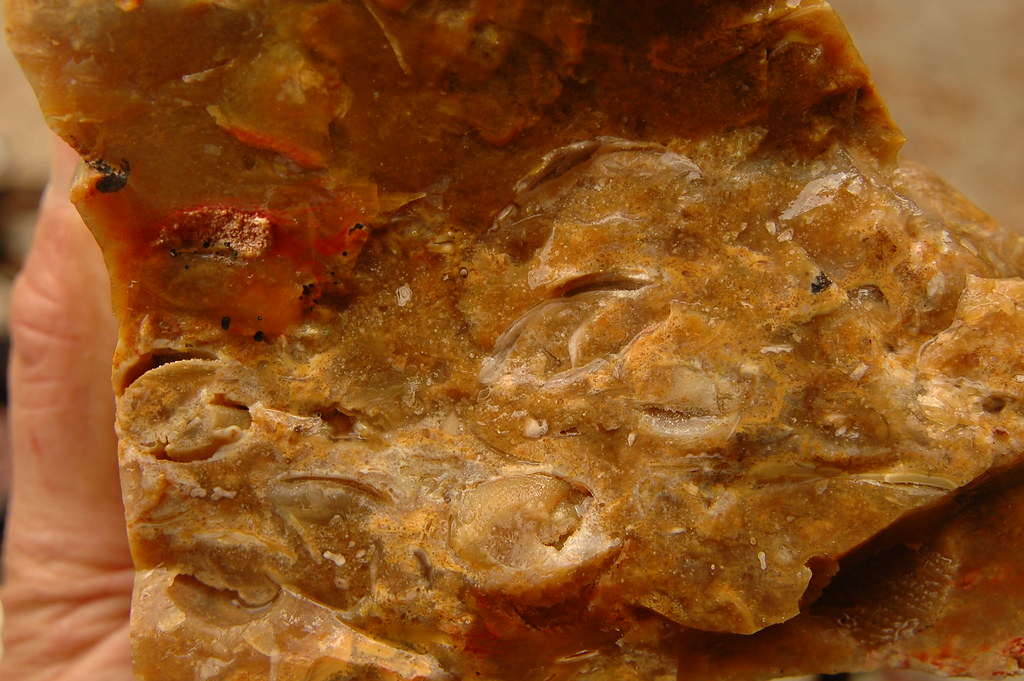 Then there are many strange silicifications. This appears to be a cast of some sort. Color likely from sitting in an ancient black muck mire. How old can muck deposits be ?  |
|
jamesp
Cave Dweller 
Member since October 2012
Posts: 36,607
|
Post by jamesp on Mar 14, 2022 5:24:06 GMT -5
A silicified coral after being shot with a 30.06 rifle. No bore hole. lol, really  |
|
jamesp
Cave Dweller 
Member since October 2012
Posts: 36,607
|
Post by jamesp on Mar 14, 2022 5:36:35 GMT -5
|
|
|
|
Post by Peruano on Mar 14, 2022 5:43:12 GMT -5
This is a sponge coral given to me by a friend who if I recall said it came from Morrocco. Soft coral but pretty.  Here are two views of a horn coral collected on a bluff above the Rio Grande south of Belen, NM. Like the Utah material but not as red and not as well preserved - but to my knowledge exceptionally rare in NM>  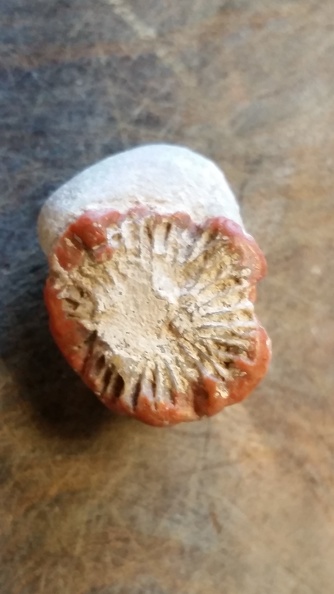 I have some material from Indonesia commonly called stingray coral which I will dig out and include when I have a chance. I have cut a piece of the reddish material that Bev (Beth!) showed here. The piece I slab (and will send back to her) had big holes like they may have been bored, but there was no obvious detail to suggest that the material was coraline. |
|
|
|
Post by victor1941 on Mar 14, 2022 11:57:21 GMT -5
James, I will donate this specimen if you find a good educational place for it. I collected it and another 75 lbs. from the dry spoil area on what I think is Honeymoon Island. I had a friend that owned a rock shop in Fort Myers, Florida that invited me to hunt for coral in the Tampa Bay spoil area. We drove up from Fort Myers, Fl. and easily found the area. It was covered with people, holes dug everywhere and coral scattered about from the Tampa Bay ship channel. The channel was being dredged wider and deeper and huge amounts of material was being removed and deposited by pipeline slurry. My interest was not what I found but druzy quartz to cut for freeform cabs. I decided to preserve this as a specimen when I noticed the clam sections once the piece was cleaned. I was a science and art teacher at the time so I knew what I found might be useful for "show and tell".
|
|
jamesp
Cave Dweller 
Member since October 2012
Posts: 36,607
|
Post by jamesp on Mar 14, 2022 12:11:21 GMT -5
This is a sponge coral given to me by a friend who if I recall said it came from Morrocco. Soft coral but pretty.  Here are two views of a horn coral collected on a bluff above the Rio Grande south of Belen, NM. Like the Utah material but not as red and not as well preserved - but to my knowledge exceptionally rare in NM>   I have some material from Indonesia commonly called stingray coral which I will dig out and include when I have a chance. I have cut a piece of the reddish material that Bev (Beth!) showed here. The piece I slab (and will send back to her) had big holes like they may have been bored, but there was no obvious detail to suggest that the material was coraline. Wow, a silicified sponge Tom. I don't recall seeing that happen often. In calcium carbonate yes, but silicified not. Conditions must have been favorable for the softer sponge to weather the process. Morocco and Indonesia apparently had excellent habitat for the silicification process since softer items and very large items become silicified there. The horn coral is an much older coral. The red color is a curiosity, did it come from the coral or from the chemicals surrounding silicification ? Being your NM samples have red in them like the Utah samples one would think it is the horn coral that supplied the color. Bring on the other coral please. |
|
jamesp
Cave Dweller 
Member since October 2012
Posts: 36,607
|
Post by jamesp on Mar 14, 2022 13:19:21 GMT -5
James, I will donate this specimen if you find a good educational place for it. I collected it and another 75 lbs. from the dry spoil area on what I think is Honeymoon Island. I had a friend that owned a rock shop in Fort Myers, Florida that invited me to hunt for coral in the Tampa Bay spoil area. We drove up from Fort Myers, Fl. and easily found the area. It was covered with people, holes dug everywhere and coral scattered about from the Tampa Bay ship channel. The channel was being dredged wider and deeper and huge amounts of material was being removed and deposited by pipeline slurry. My interest was not what I found but druzy quartz to cut for freeform cabs. I decided to preserve this as a specimen when I noticed the clam sections once the piece was cleaned. I was a science and art teacher at the time so I knew what I found might be useful for "show and tell". If you know of an educational facility that would be interested in a collection of this coral let me know. I love colorful agates woods jaspers and the like. The fossil coral was the closest source of agate like material near home. It just happened to be a fossil. Fortunately a fossil of not much value to science. Collecting it took me on a journey thru learning about the ice age, beautiful wilderness, great people, the tumbling hobby, interesting geology, artifacts, old bottle finds, other fossils, and the list goes on. For 20 years, and not much has changed. The locations remain a beautiful wilderness and there is a large portion I have not explored. About Tampa and the islands off the coast in that area - they have been heavily picked over however their remains a layer under the sand covering a vast area. A direct hit from a hurricane could expose 1000's of tons of that coral. The coral layer averages about a foot thick with an average of 5 feet of sand on top of it. And it is illegal to remove the overburden sand by prop washing or dredging to get to it. There is a more sought after 'finger' coral, the lapidarians love it. It gets exposed during excavation projects in and around Tampa. From images  |
|
jamesp
Cave Dweller 
Member since October 2012
Posts: 36,607
|
Post by jamesp on Mar 14, 2022 14:10:52 GMT -5
This melon sized coral was sealed from the stains of the organic world. It has a strange partial powdery silicification. The deformed silicifications were cool finds.  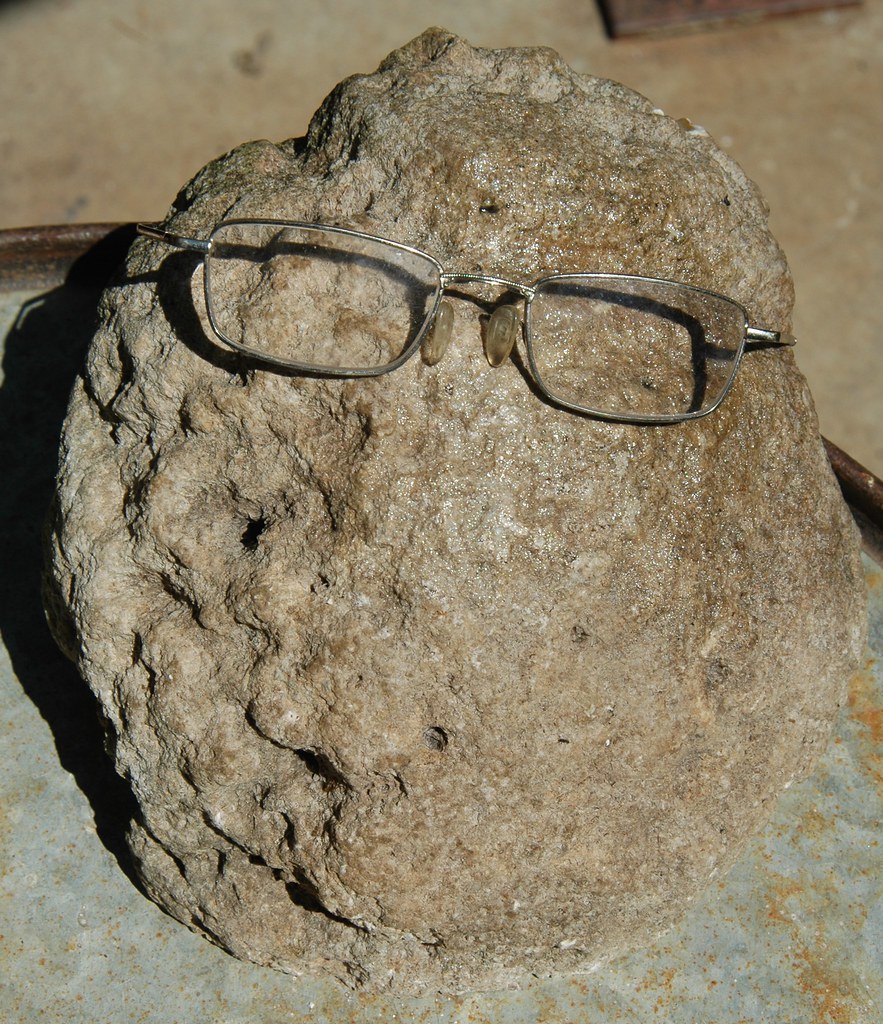 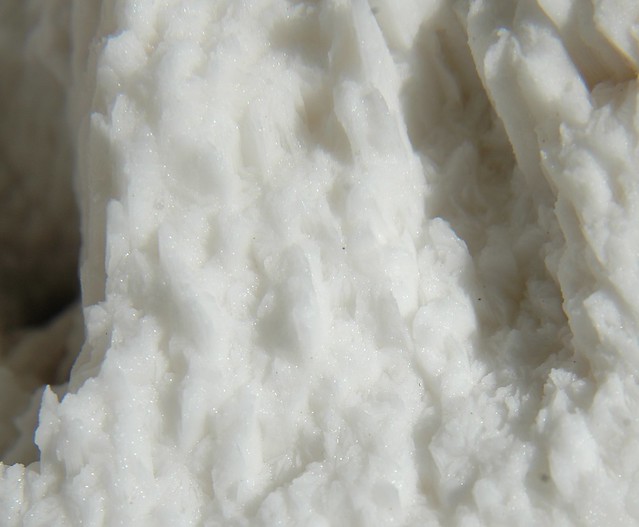 |
|
RWA3006
Cave Dweller 
Member since March 2009
Posts: 4,633 
|
Post by RWA3006 on Mar 14, 2022 22:37:31 GMT -5
|
|
|
|
Post by hummingbirdstones on Mar 14, 2022 22:53:57 GMT -5
|
|
herb
spending too much on rocks
 
Member since November 2011
Posts: 475
|
Post by herb on Mar 15, 2022 7:57:36 GMT -5
That would make a really cool counter top! :-) |
|
jamesp
Cave Dweller 
Member since October 2012
Posts: 36,607
|
Post by jamesp on Mar 15, 2022 8:42:13 GMT -5
What a fine fossil RWA3006. Too inviting for all lapidary pleasures. The interior decorating and jewelry color theme of recent is black/grey/white. The hot colors trending of the present. If memory serves the RTH members living near the Great Lakes find similar material. Do you know it's origins ? Please share if so. |
|